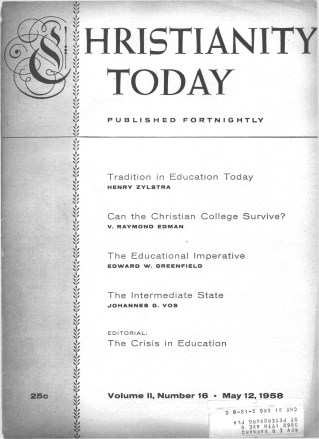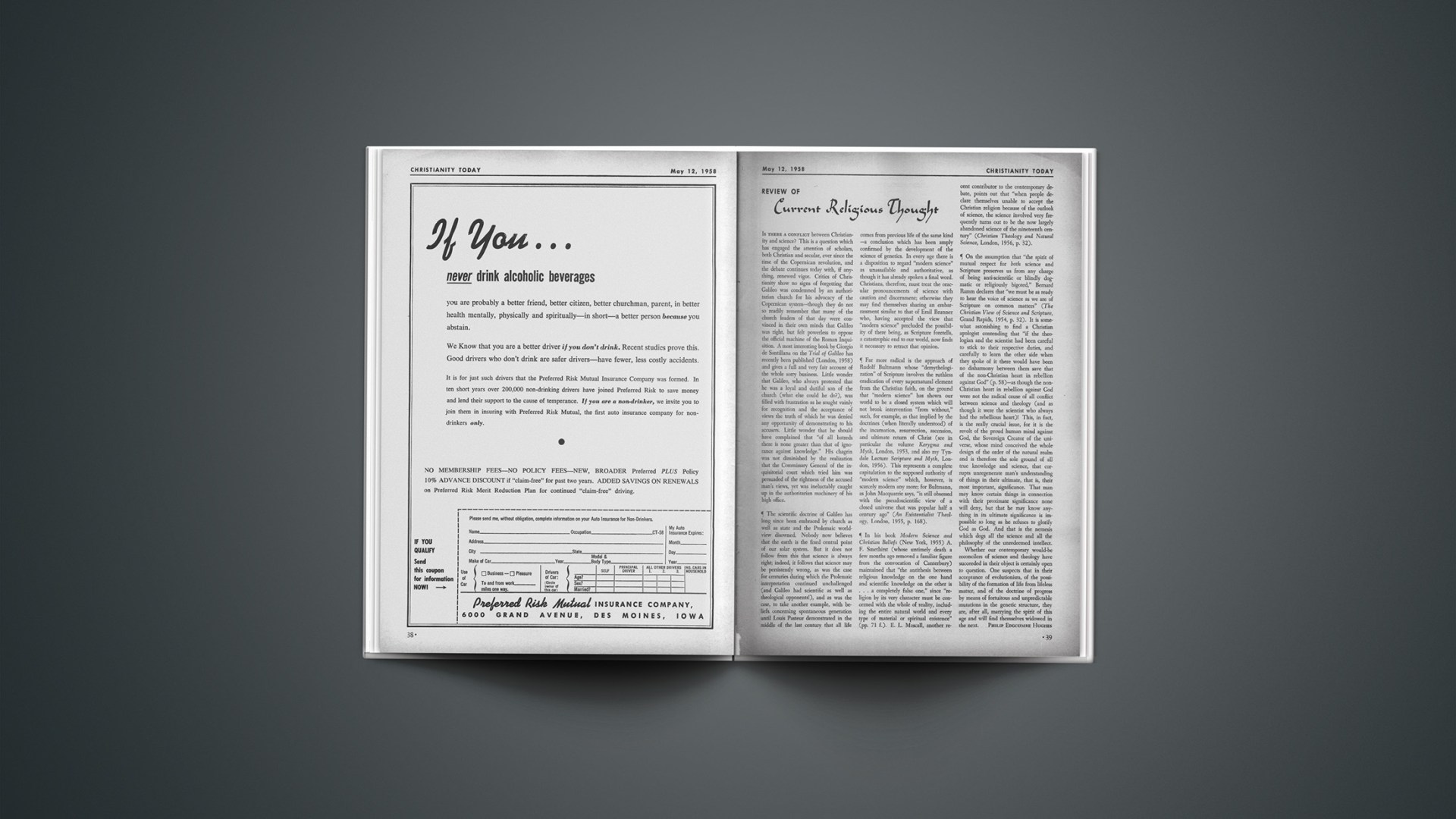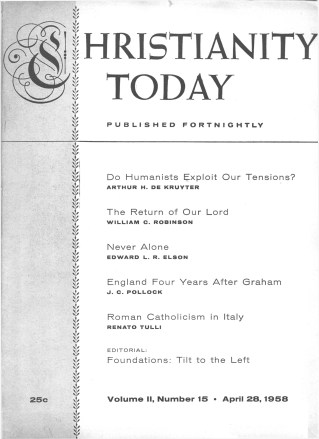The first meeting had started. The entire bay area had become aware that the “pitiful minority” representing Protestant Christianity had joined hands in a united witness for Christ.
Church and city officials had brought words of welcome, and a magnificent choir of 1600 voices had stirred the audience as they sang, “How Great Thou Art,” and later, “The Lord’s Prayer.”
Through all this, a man in a grey flannel suit had watched from a box seat. He seemed only an incidental spectator. When the vast audience joined in hymns of the Church he did not sing.… But now the sermon—a message of man’s need and of God’s love—was over. There was a short invitation, telling of the vital importance of accepting the Christ of Calvary as Saviour and Lord.… First to walk purposefully forward were a husband and wife, the latter carrying a sleeping child. Then by the tens and even by the hundreds came men and women, boys and girls—people of every social strata and many national and racial backgrounds … a sailor holding his girl by the hand … on and on they came. There was little suggestion of outward emotion, only determination; and, on the faces of some, obvious joy and relief. Just as the more than four hundred were turning into the counselling room, the man in the grey flannel suit, accompanied by a distinguished elderly man, head high and purpose in his eyes, walked forward and took his place with the others.
I attended the early meetings of the Billy Graham San Francisco Bay Cities Crusade, not only because an area stirred for Christ is a spiritual stimulus, but also because this witness holds a significance which has no relation to the statistics, reports and news stories in the daily papers. The great significance of these meetings has nothing to do with crowds, with sponsorship, or with a personality. Nor does it center in this demonstration of true ecumenicity in which varying denominations have joined in a united witness for the Lord Jesus Christ, valuable as this experience is proving.
What then is the peculiar importance of what is taking place in San Francisco during these weeks? It is a matter of theological import, and centers in what is either uniting or dividing men straight across Christendom—the content of the message itself.
We live in a day when almost every doctrine of the Christian faith is called in question; in a time when many center their concern far more in ecclesiastical and organizational matters than in the Gospel. For that reason San Francisco is deeply significant because of the particular emphasis of the message. There men are being confronted with basic realities—sin, righteousness and judgment to come. Could anything be more needed in our day? Because this foundation has not been consistently laid in recent years, so many within the Church are floundering today, and the Church herself has lost some of the influence so sorely needed in this age of space and crisis.
The message being preached in San Francisco is nothing new. It has been historically believed and clearly affirmed in the articles of faith of most of the major denominations; it is the Gospel which is still relevant for the needs of the individual and for society as a whole.
By some it is said that this message lacks intellectual respectability and social content. But the Apostle Paul warned of preaching with enticing words of man’s wisdom, affirming that effective preaching must be in the presence and power of the Holy Spirit lest faith be placed in the wisdom of men rather than in the power of God. How can the claims of Christ be presented except before the backdrop of man’s sinfulness and the inevitability of God’s judgment? Only then can he appreciate the love and mercy of God in Christ and the righteousness of Christ imputed to those who believe.
In London a prominent churchman remarked that in his opinion God had raised up Billy Graham for the stressing of one doctrine above all others: the new birth and its inescapable place in the Gospel. In a measure this is true, for he preaches regeneration as one of God’s imperatives, not as an elective, as the gateway through which all must pass if they enter the Kingdom of Heaven.
No one realizes more than Billy Graham that effective evangelism is but the first step in leading men into the fullness of Christian experience. He is first to admit that mass evangelism is but one of many ways for winning men to Christ.
I studied the faces of those who walked forward to make a public decision for Christ in San Francisco. God alone knows what was in their hearts, but I am very sure that for many of this number it was the beginning of a new life with Christ as a vital reality. As the seed of the Gospel was sown some unquestionably fell on stony ground from where it was quickly removed by the emissaries of Satan. Others fell in callous hearts, and some where there is more preoccupation with time than with eternity. But some fell on fallow ground where, under the gentle nurture of the Holy Spirit, it will bring forth an abundant harvest.
When our Lord was on earth only a comparatively few accepted him. But those who did went on to win others.
It is not Billy Graham who is being tested in San Francisco. Nor is it a particular method of presenting Christ. At stake is the relevance of the Gospel to meet the needs of men and women who live on the edge of eternity. Nearly 1,200 churches in the bay area believe in both the power and relevance of the historic message of salvation and have joined in this effort. Many of these will reap rich rewards, for cold Christians are having the fires of their faith and love rekindled while thousands of others are meeting Christ for the first time.
This is a time when the Church should restudy her message. According to the world’s present physical and spiritual birth rate only one person in four will become a Christian. It does not solve the dilemma to preach universalism, or deny the eternal implications of sin, or to ignore the words of our Lord: “… no man cometh to the Father but my me.”
It is urgently important that we return to divinely revealed truth and preach it without apology, trusting in the power of the Holy Spirit to take that message and use it for the redemption of mankind. It is also vitally important that we who name the name of Christ shall so live that we shall honor his name.
If San Francisco should be used to lead to a new realization of the relevancy of the old Gospel, it will prove of inestimable value to the Church and to the world to which she ministers.
At the Cow Palace, and in homes across America as people view the telecasts, there will be many thousands who will respond. Should a new acceptance of the message eventuate in the churches of our land it will prove an epochal event.
L. NELSON BELL












